|
|
Post by Himmapaan on Aug 7, 2010 18:47:40 GMT
Gorgeous...
|
|
|
|
Post by paleoferroequine on Aug 8, 2010 2:15:47 GMT
Thought I'd show some of the wildlife around here, most of it is about 2-4 blocks from my house in town. 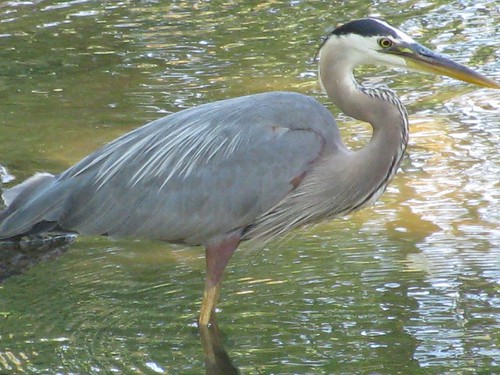 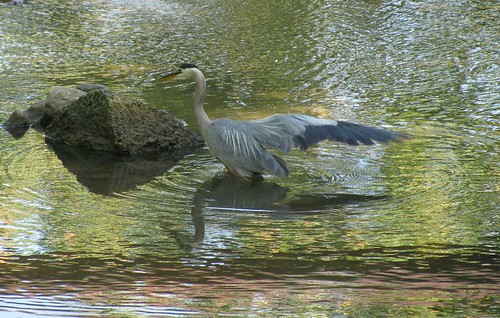 Great Blue Heron-Ardea herodias 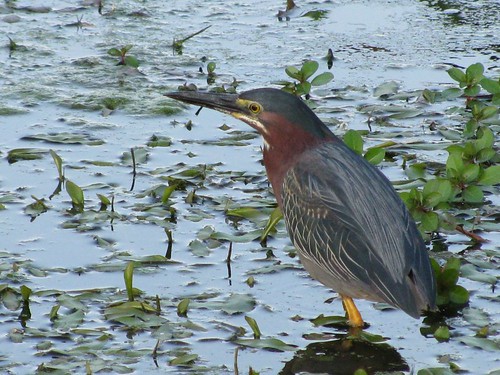 Green Heron-Butorides virescens 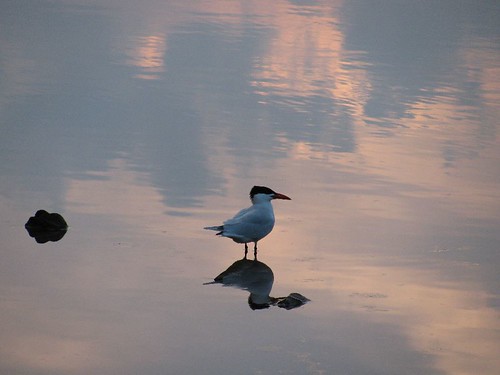 Caspian Tern-Hydroprogne caspia 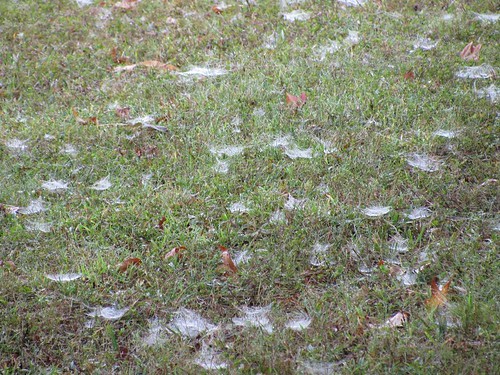  Funnel Web Spiders- unknown species, early morning dew caused this, about 1/4 mile wide  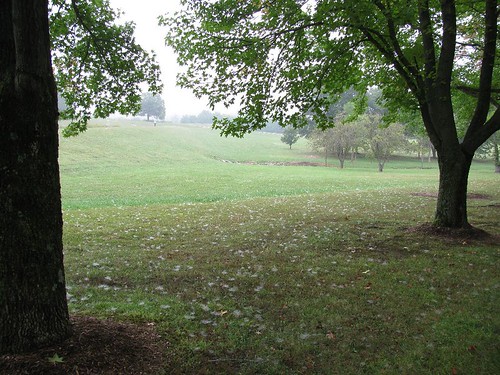 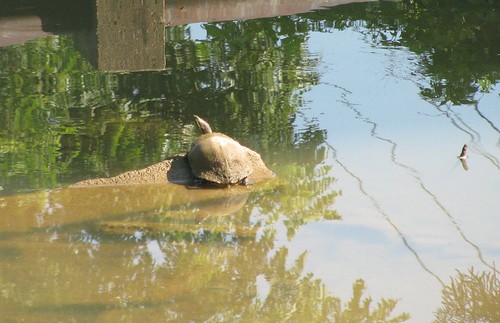 Red-Eared Slider-Trachemys scripta elegans  Turkey Vulture- Cathartes aura 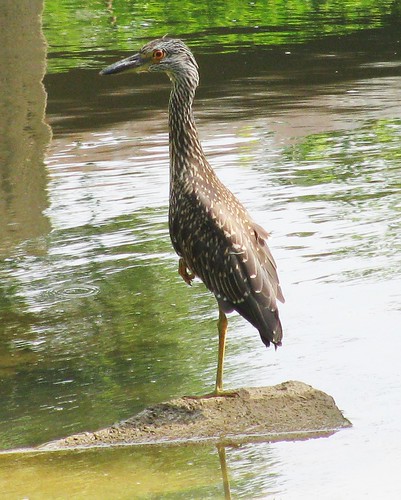 Immature Yellow-Crowned Night-Heron-Nyctanassa violacea |
|
|
|
Post by Libraraptor on Aug 8, 2010 8:30:10 GMT
You truly live in a beautiful enviroment!
|
|
|
|
Post by Himmapaan on Aug 8, 2010 11:30:43 GMT
The funnel webs are an extraordinary sight; such an expanse of them! From a distance, they look like a scattering of feathers.
|
|
|
|
Post by rugops on Aug 8, 2010 14:42:13 GMT
Great pics of the herons and the turn!, but I thought funnel web spider are really poisonous. They kill lots of people in Australia.
|
|
|
|
Post by paleoferroequine on Aug 8, 2010 18:52:09 GMT
Great pics of the herons and the turn!, but I thought funnel web spider are really poisonous. They kill lots of people in Australia. I'm sure they do but I live in Missouri, same name, very different spider. Mostly harmless! The common funnel webs have worldwide distribution and are fairly small. I never saw so may of these webs though, the morning before and after they weren't visible at all! Just the right conditions. The tern is not native here but an accidental just traveling through most likely. Sometimes we get seagulls wandering around also. |
|
|
|
Post by Radman on Aug 14, 2010 17:15:32 GMT
Baby Anole among Liriope and Pennywort: 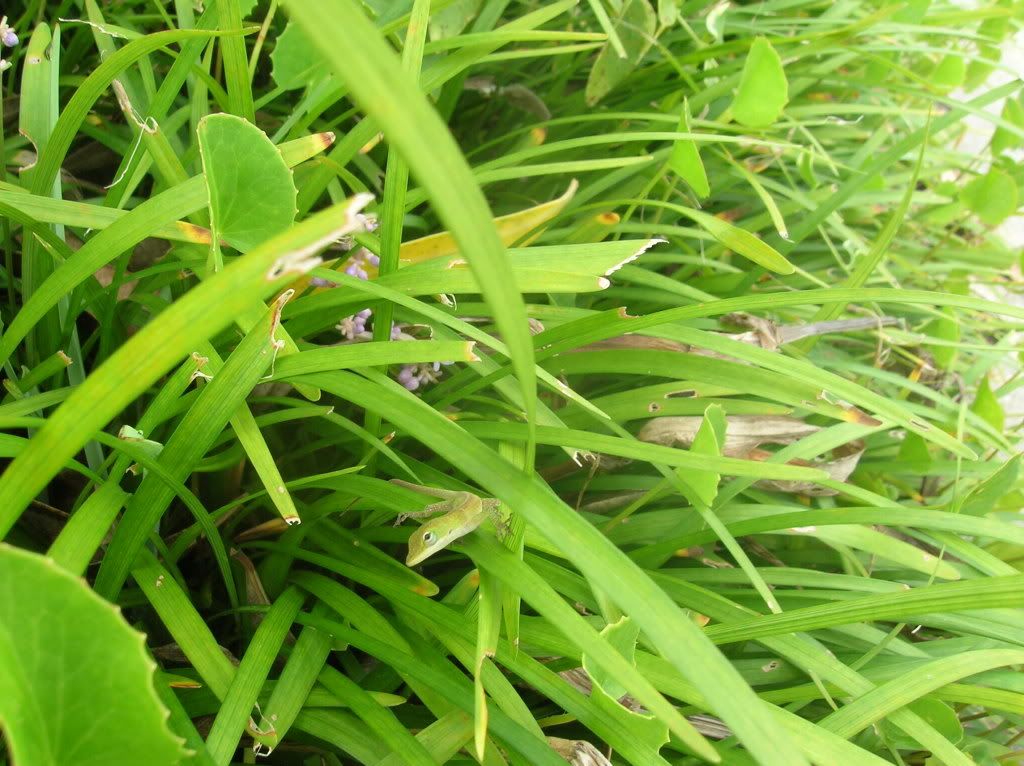  |
|
|
|
Post by Radman on Aug 14, 2010 17:20:31 GMT
First one to identify this horrific beast on my patio window gets a cookie! 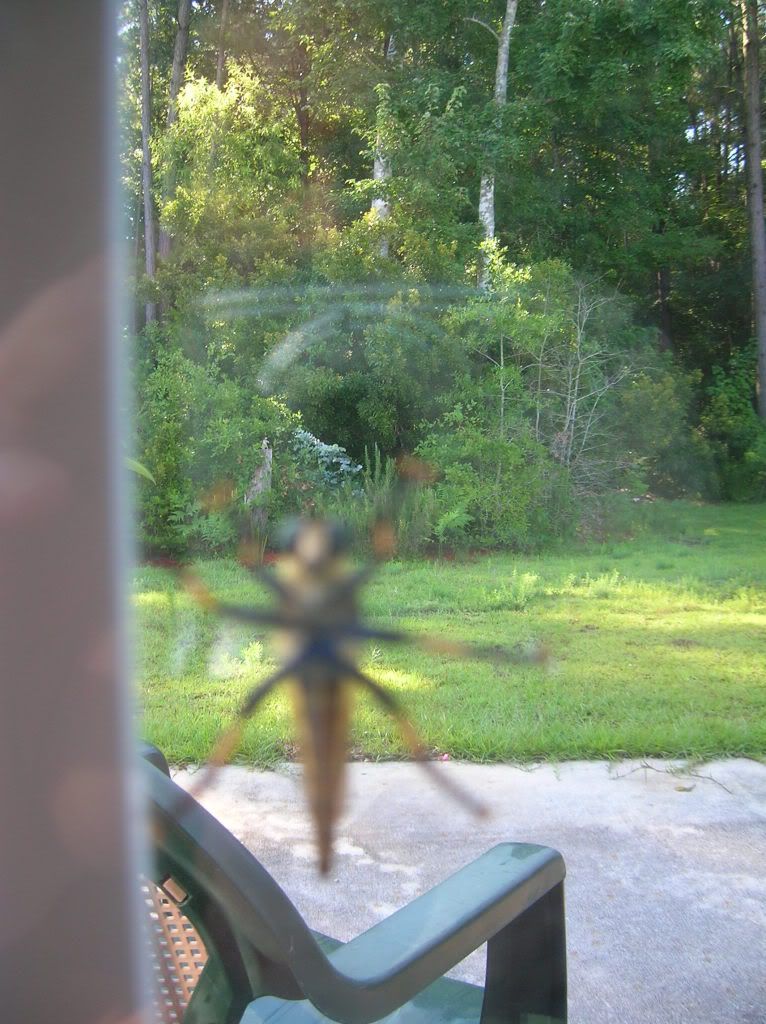 |
|
|
|
Post by paleoferroequine on Aug 14, 2010 18:23:08 GMT
First one to identify this horrific beast on my patio window gets a cookie!  Um, some sort of robber fly Efferia? female? |
|
|
|
Post by Radman on Aug 15, 2010 16:23:55 GMT
Palamedes swallowtail on Hibiscus: 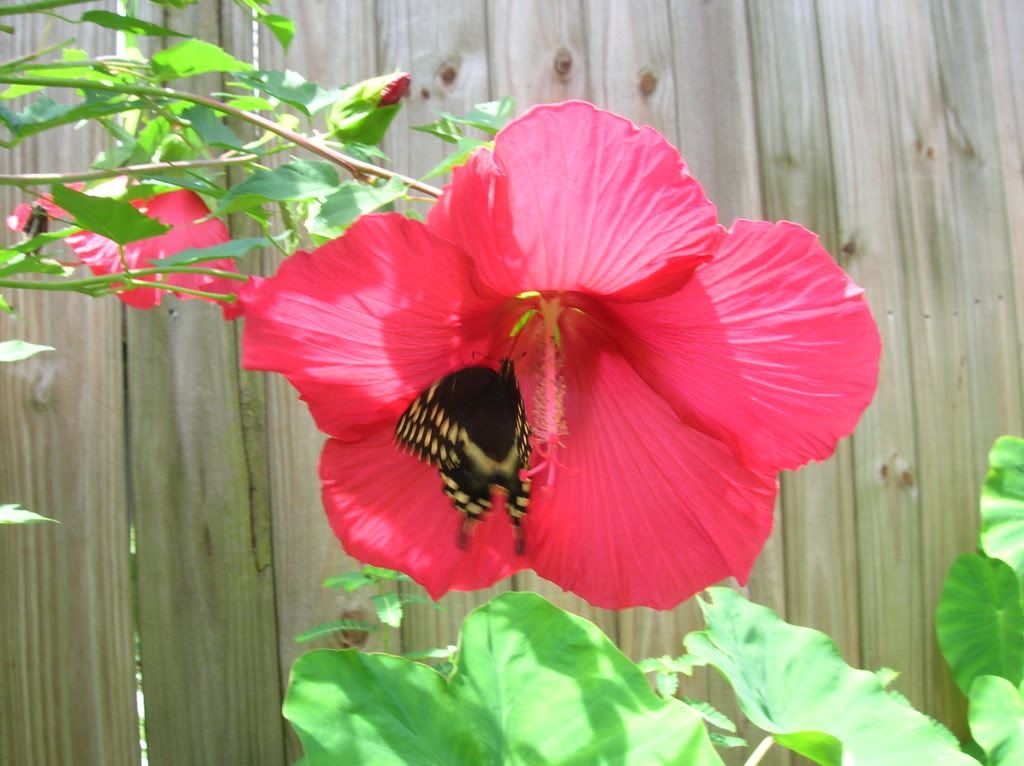 |
|
|
|
Post by Radman on Aug 20, 2010 13:20:27 GMT
Carolina sphinx on ginger blossoms 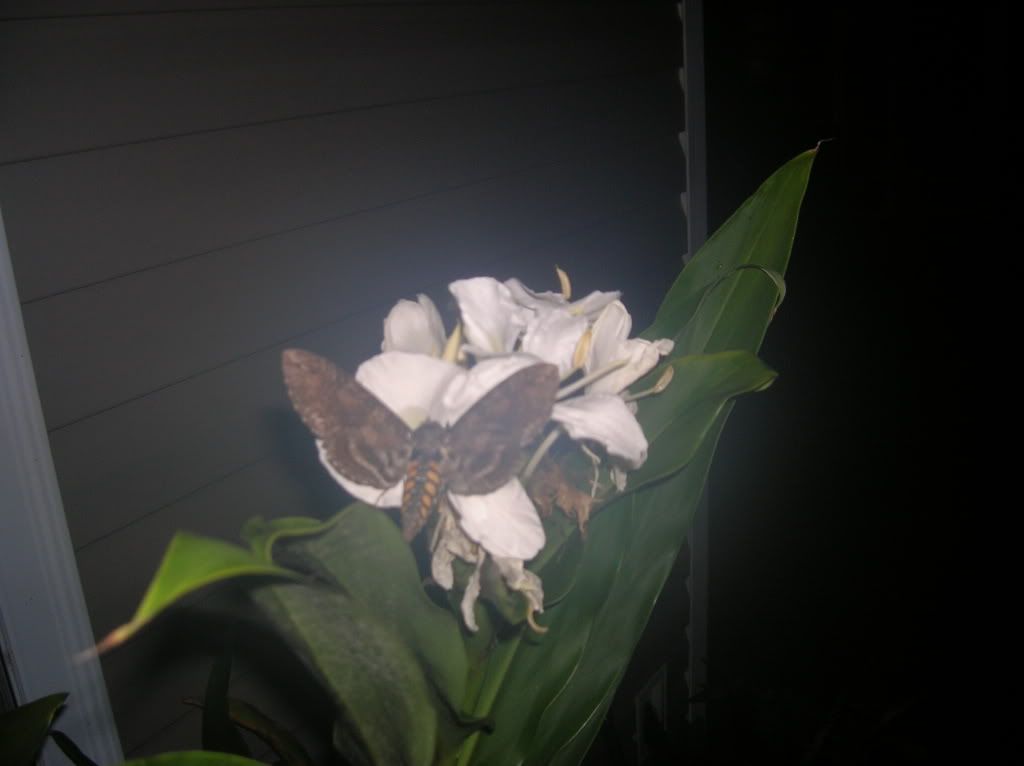 This photo was taken at night with a flash. The moth did not like it at all! Pink-spotted Hawkmoth: 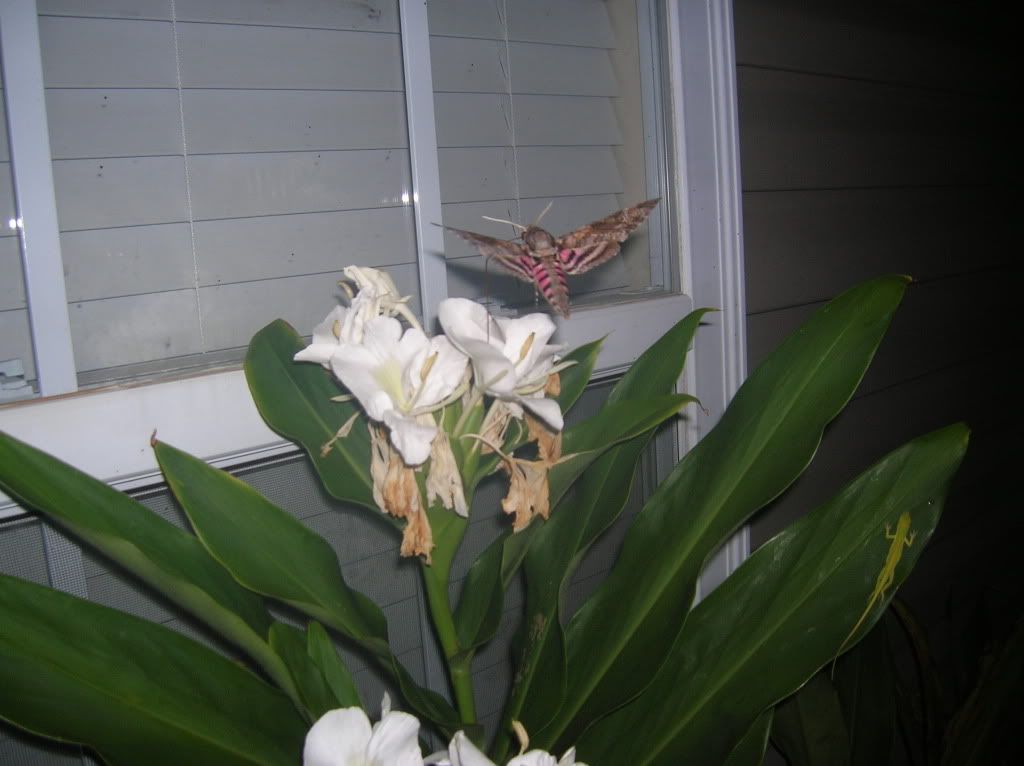 Here's a closeup as it hovers over a blossom. Check out that incredible tongue! 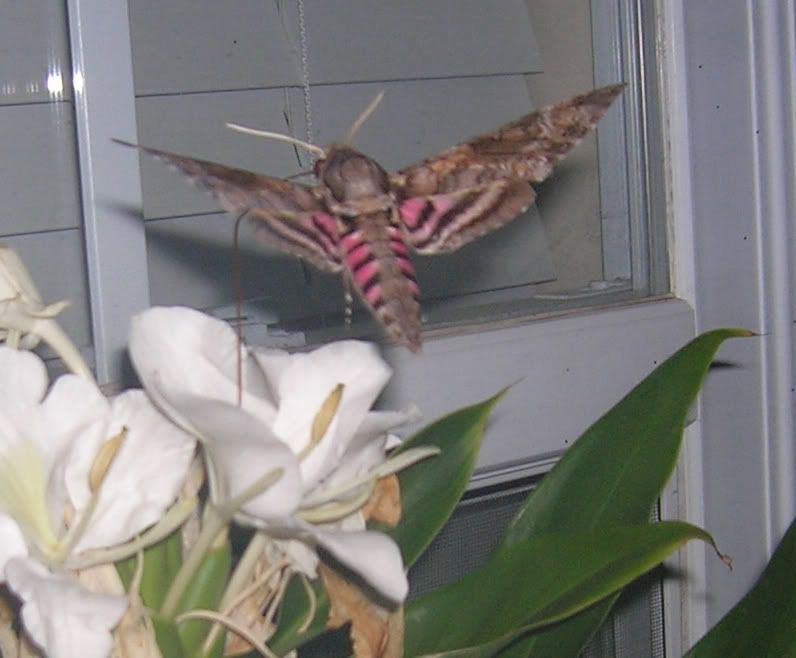 These guys are the same size as hummingbirds. |
|
|
|
Post by brontodocus on Aug 20, 2010 13:40:24 GMT
Nice photos!  Is the pink spotted hawkmoth a species of Agrius? We have a very similar one here, Agrius convolvuli which also has a 10 cm "tongue", but it is restricted to Europe, Africa, Asia and Australia. |
|
|
|
Post by Himmapaan on Aug 20, 2010 14:12:15 GMT
Amazing!
|
|
|
|
Post by Radman on Aug 20, 2010 21:09:41 GMT
Nice photos!  Is the pink spotted hawkmoth a species of Agrius? We have a very similar one here, Agrius convolvuli which also has a 10 cm "tongue", but it is restricted to Europe, Africa, Asia and Australia. Good call, yes, it is Agrius cingulatus. The caterpillar is locally known as the sweet potato hornworm. They are fairly common in the South; they are good fliers and may occasionally appear just about anywhere on the continent. ;D |
|
|
|
Post by roselaar on Aug 20, 2010 21:27:15 GMT
Magnificent creature there, and excellent photos! Thanks for sharing!
|
|
|
|
Post by paleoferroequine on Aug 20, 2010 21:27:47 GMT
Nice photos!  Is the pink spotted hawkmoth a species of Agrius? We have a very similar one here, Agrius convolvuli which also has a 10 cm "tongue", but it is restricted to Europe, Africa, Asia and Australia. Good call, yes, it is Agrias cingulatus. The caterpillar is locally known as the sweet potato hornworm. They are fairly common in the South; they are good fliers and may occasionally appear just about anywhere on the continent. ;D Not to nitpick but it's Agrius, not Agrias (a S.A. butterfly). Bronto got it right. Still, cool pic! ;D I've been trying to get photos of Luna moths but no luck, they are too far away. |
|
|
|
Post by Radman on Aug 20, 2010 21:41:55 GMT
Good call, yes, it is Agrius cingulatus. The caterpillar is locally known as the sweet potato hornworm. They are fairly common in the South; they are good fliers and may occasionally appear just about anywhere on the continent. ;D Not to nitpick but it's Agrius, not Agrias (a S.A. butterfly). Bronto got it right. Still, cool pic! ;D I've been trying to get photos of Luna moths but no luck, they are too far away. Right, it was a typo. Now fixed. Thanx for the kudos!  |
|
|
|
Post by Radman on Aug 20, 2010 21:58:14 GMT
Good call, yes, it is Agrias cingulatus. The caterpillar is locally known as the sweet potato hornworm. They are fairly common in the South; they are good fliers and may occasionally appear just about anywhere on the continent. ;D Not to nitpick but it's Agrius, not Agrias (a S.A. butterfly). Bronto got it right. Still, cool pic! ;D I've been trying to get photos of Luna moths but no luck, they are too far away. Many of the giant silk moths, like the Luna, since they don't feed, have a very specific window of flying time, say 3-4 AM or 5-6 AM, and that's it. Obviously it's not that exact, but the bigger fliers do appear only at certain times, and you're lucky to bag or photograph one only if it chooses a poor resting place. |
|
|
|
Post by Radman on Aug 21, 2010 14:45:33 GMT
Here is a green lynx spider ( Peucetia viridans) on Lantana. Note the beautiful camouflage.  Just a few inches away, another lynx has captured a sphecid wasp from its post among the basil flowers. 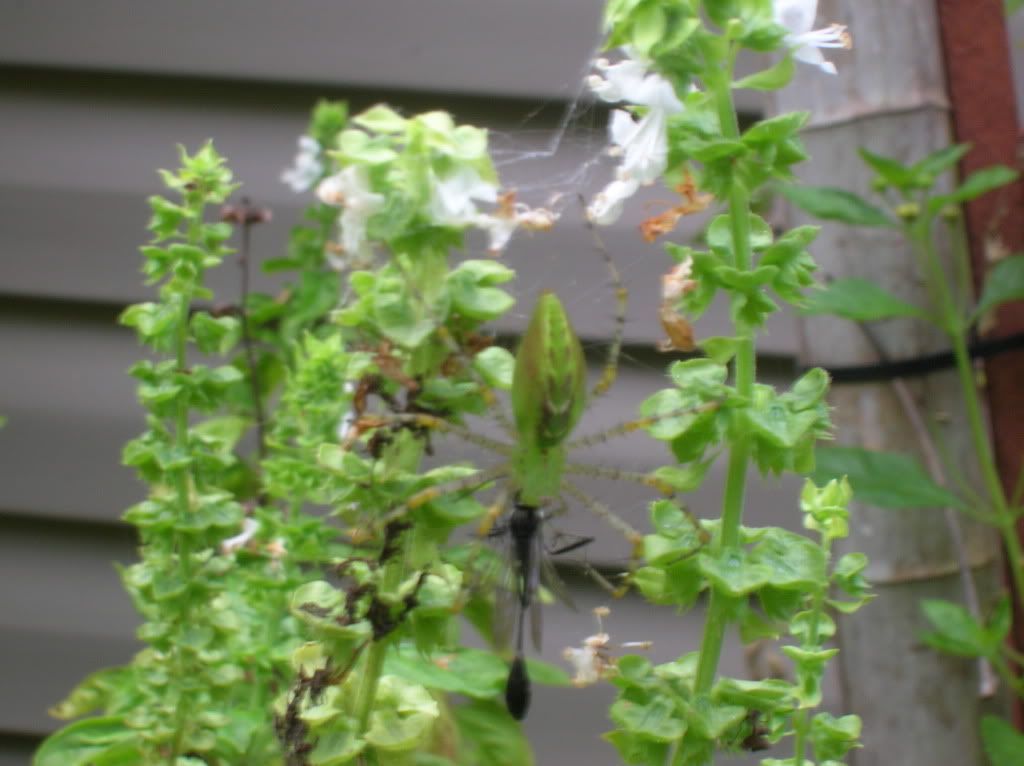 These spiders are pretty big, body length almost 2 cm, and somewhat aggressive. I have to be careful when I pick the basil leaves for panini! |
|
|
|
Post by Himmapaan on Aug 21, 2010 14:51:07 GMT
Wow...
|
|